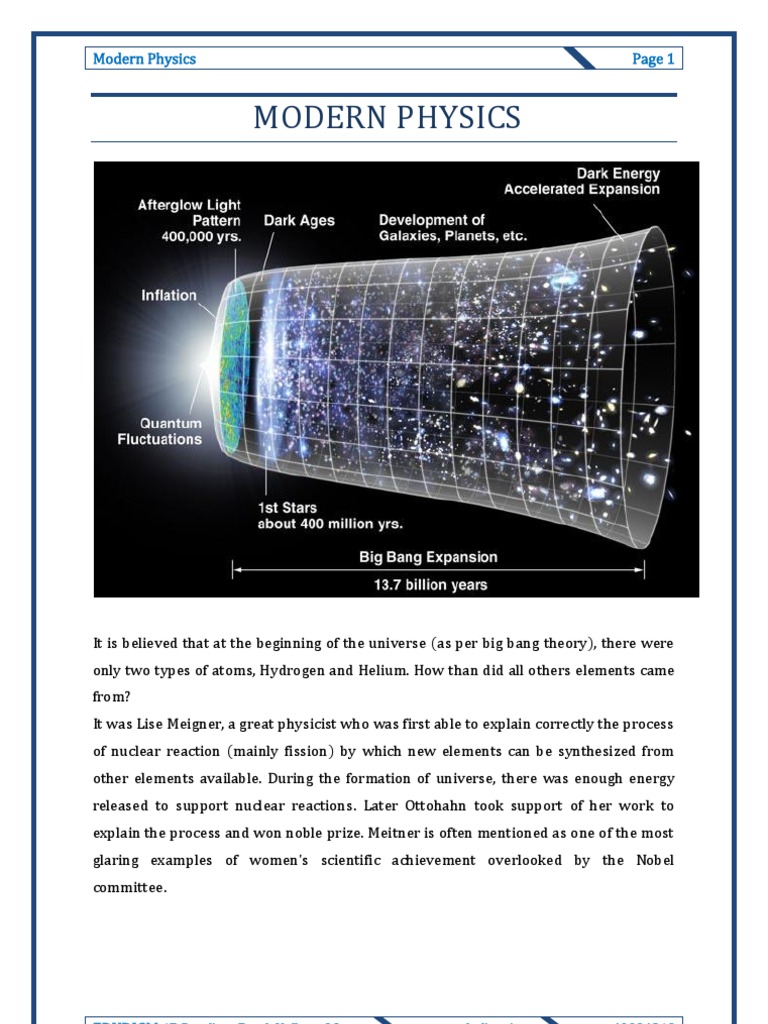When delving into the realms of modern physics and atomic structure, one might liken the relationship between these domains to that of an artist and the canvas—each dependent on the other to create a comprehensive picture of the natural world. While modern physics encompasses a broad array of concepts, from the vastness of cosmology to the nuances of quantum mechanics, atomic structure serves as a crucial foundational element that informs many of these theories. Understanding how these fields interrelate can reveal not only the intricacies of matter but also the fundamental principles that govern the universe.
At the heart of modern physics lies the quest to comprehend the underlying mechanisms that dictate the behavior of matter and energy. This quest also leads us directly to atomic structure, the bedrock upon which many of the theories of modern physics are constructed. By beginning with the atomic model, we can appreciate the transition from classical concepts to the more esoteric notions that characterize contemporary scientific thought.
The journey through atomic structure begins with the ancient philosophy of atomism. Early thinkers, such as Democritus and Epicurus, posited the existence of indivisible particles, a notion that would echo through centuries until it found empirical support in the early 20th century. With the advent of quantum mechanics, atoms were no longer viewed merely as solid particles. Instead, they morphed into complex systems governed by probabilities and uncertainties, reflecting the tenets of modern physics.
One of the pivotal developments in understanding atomic structure was the Bohr model, which introduced quantization into the arrangement of electrons. This model illustrated how electrons exist in discrete energy levels, akin to the rungs of a ladder, each representing a distinct state. As physicists delved deeper into atomic behavior, they unearthed the paradoxes and anomalies of quantum mechanics, which essentially beg the question: how does one reconcile the simplicity of atomic models with the complexity and unpredictability that permeates modern physics?
Intriguingly, the metaphor of waves and particles serves as a bridge between these two domains. The duality of matter underscores the inherent connection between atomic structure and modern physics. Electrons, for instance, exhibit properties characteristic of both particles and waves—an attribute that becomes increasingly significant in quantum mechanics. Here, the wave function describes the probability distribution of finding an electron in a given location, emphasizing the probabilistic nature of reality as opposed to the deterministic frameworks of classical physics.
Another striking parallel exists in the field of particle physics, where atomic structure is further dissected into its constituent parts. The Standard Model elucidates a tapestry of fundamental particles, including quarks and leptons, which play integral roles in our understanding of atomic composition. The analogy of breaking an egg to reveal a yolk can aptly describe this: while atomic structure provides the shell, modern physics peels back this layer to examine the deeper constituents of matter.
The striking beauty of this relationship is further epitomized in the concept of symmetry. In both atomic structure and modern physics, symmetries play a critical role in defining the laws of nature. The symmetries observed at the atomic level dictate the behavior of electrons and the formation of chemical bonds, which in turn affect macroscopic properties of materials. Meanwhile, in modern physics, the study of gauge symmetries gives rise to interactions between elementary particles, enabling the fundamental forces of nature to manifest. This interplay illuminates the interconnectedness of various forces and particles, weaving a rich narrative that highlights the elegance of the universe.
This exploration culminates in the pragmatic implications of modern physics on technology and industry, which circle back to atomic structure. Quantum mechanics, with its principles derived from atomic behavior, has birthed revolutionary technologies—such as quantum computing, lasers, and MRI machines. Each of these innovations showcases the substantial impact of understanding atomic structure on modern scientific advancements. Here, we see a vivid illustration of how fundamental theories translate into practical applications, turning abstract principles into tangible benefits for humanity.
As we contemplate the question of how similar modern physics is to atomic structure, it becomes evident that these realms are inextricably intertwined. Atomic structure provides the groundwork upon which the complex edifice of modern physics is constructed. With concepts such as wave-particle duality, symmetry, and the dissection of matter into fundamental particles, the narrative spans from the infinitesimally small to the immeasurably vast.
In conclusion, the relationship between modern physics and atomic structure is one of profound significance. Like a partnership between a masterful painter and their canvas, where each complements the other to create a cohesive work of art, these fields illuminate the fundamental truths of our existence. The study of atomic structure enriches our understanding of modern physics, and conversely, modern physics deepens our appreciation of the atomic world. In this dance between the minute and the cosmic, we continue to unravel the mysteries that define our reality, forever enthralled by the elegant tapestry woven from the threads of science.












